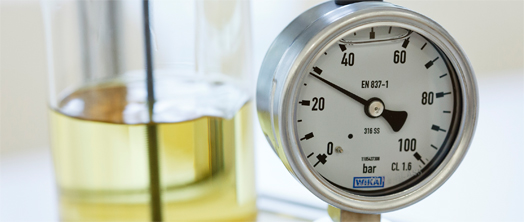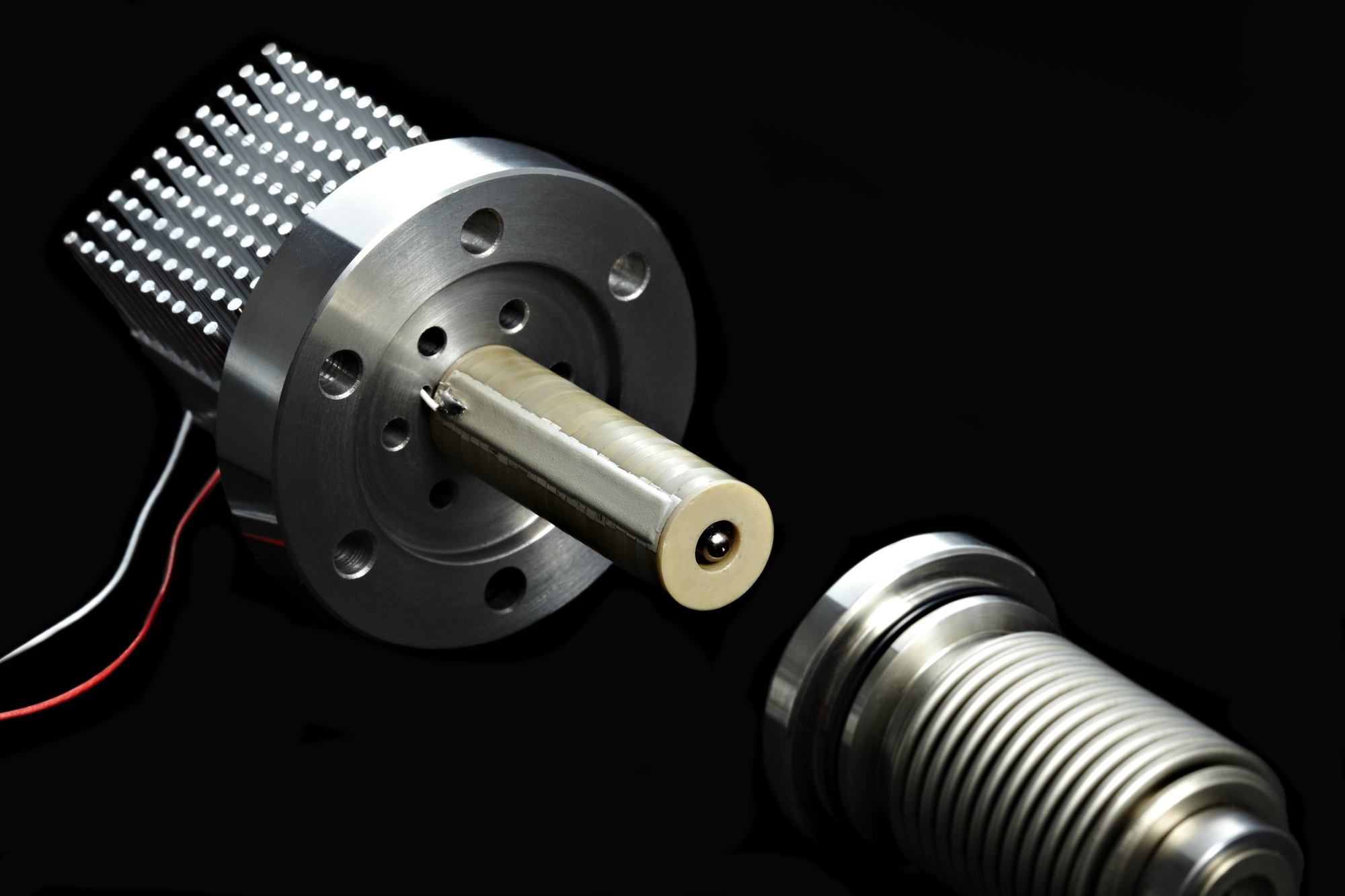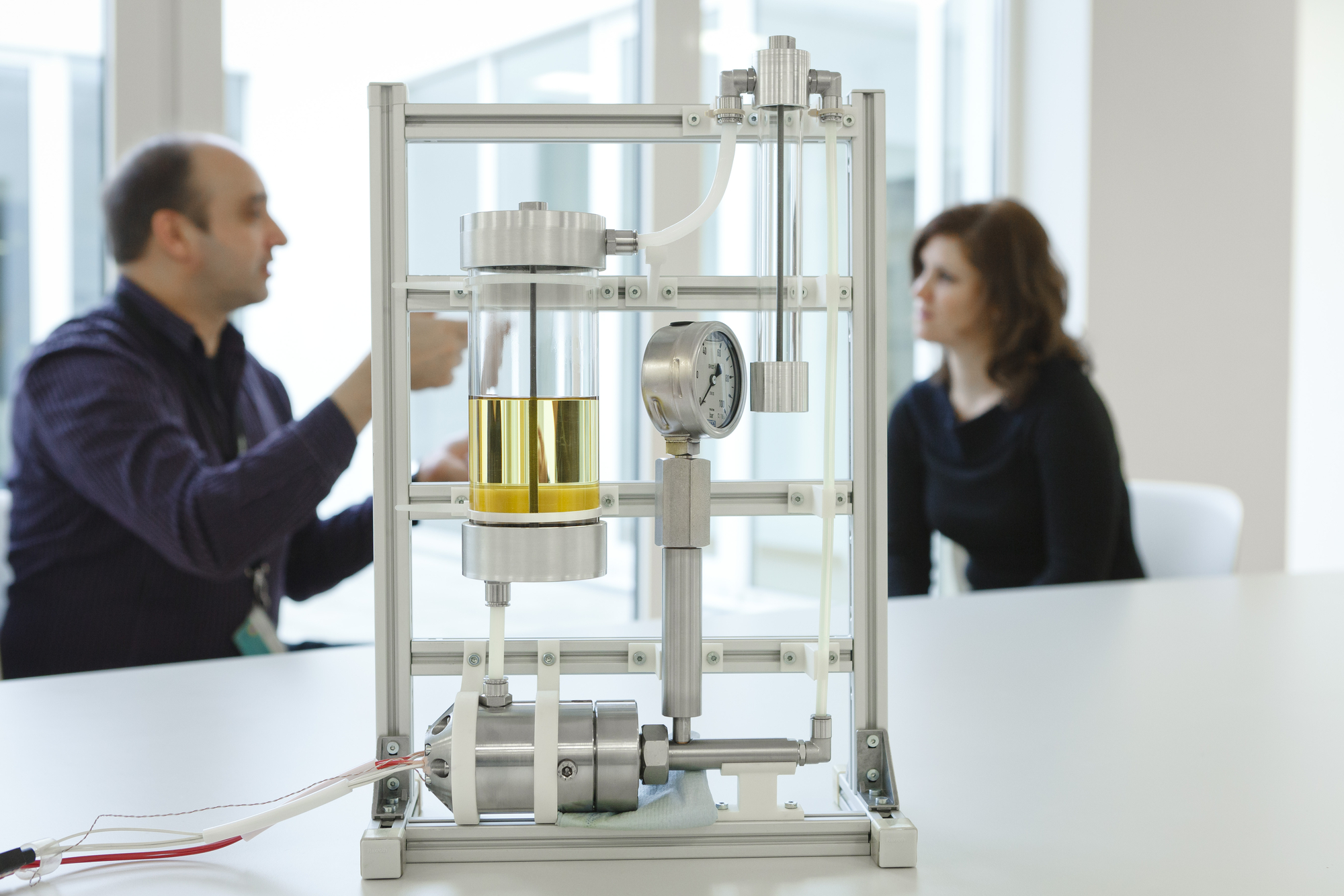AdBlue® pump
In recent years, AdBlue® has been used for exhaust gas aftertreatment in SCR catalysts in order to reduce nitrogen oxide emissions from diesel-powered engines. Currently, pumps which inject the AdBlue® at 5 - 10 bar are employed for this purpose.
In this project, the companies Noliac and Ricardo, together with Fraunhofer LBF, developed a powerful pump, which is driven by a piezo actuator and generates pressures of up to 50 bar. Thanks to the higher pressure, the pump generates a finer spray mist for injection. Thus, nitrogen oxide emissions may be reduced further. Moreover, the volumetric flow rate may be adapted by varying the operating frequency, and the injected amount can be adjusted much more accurately to different driving conditions.
Among other advantages, this prevents deposits which could otherwise result from an overdose caused by non-reacted AdBlue® within the exhaust train, as well as higher nitrogen oxide levels which may arise if the injected amount is too low.
The development process also included the creation of a coupled simulation model, which interconnects the power electronics, the piezo actuator and the hydraulic system in a way that enables a functioning pump system to be set up without high costs and complexities with regard to hardware requirements.
The values measured in real tests coincide well with the simulation results. At 600 Hz, the piezo pump delivers a volumetric flow rate of 270 ccm/min at 50 bar.
For use in trucks, a typically required flow rate is 150 ccm/min, which can be achieved with the existing piezo pump at an operating frequency of just 220 Hz. The power electronics developed by the company Ricardo enables comprehensive adjustments of the control system, thus providing for further optimization potential in terms of power consumption, actuator size and possible range of applications.
For demonstration purposes, a system has been set up in which the pump circulates a comparable fluid.
In order to ensure the reliability of the technology both on the component and on the system level, comprehensive investigations were carried out. An experimental test procedure which was developed further within the framework of the project proved that the new piezo actuators are more resistant to the influence of humidity than conventional ones. In the current development stage, a failure mode and effects analysis (FMEA) was carried out for the piezo pump. Thus, comprehensive findings on the systemic implications of individual failure modes are available, in particular for the actuator unit.
 Fraunhofer Institute for Structural Durability and System Reliability LBF
Fraunhofer Institute for Structural Durability and System Reliability LBF


